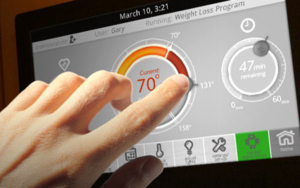If your pool has turned into a swampy, green mess, you’re going to want to clean up that water fast
No one wants a green pool. Murky water and algae growth is a gross problem. But, unfortunately, it’s one that nearly every pool owner has to deal with at one point or another. For all of us that have dealt with a green pool, the goal is to get the water back to its crystal clear quality as soon as possible.
After all, a green pool means it’s dirty. Bacteria and algae have been allowed to flourish and grow. To get the water clean again, you’ll need to determine what caused the water to get dirty and then fix the issue.
What caused the green pool water?
While the main reason your pool is green is because of bacteria growth, there are a couple of different things that could have happened that allowed the boom.
The first is improper pH balance. A healthy pool will be between 7.2 to 7.6 on the pH scale. If your pool doesn’t have the right chemistry, the water will allow the buildup of calcium and other minerals and won’t kill the bacteria in the water. You’ll need to check the pH balance of your pool if it’s turned green and see where you’re at.
The problem could have started not in the water, but instead with the pool filter. If your filtration system has stopped working, it can’t remove any algae. Once this happens, the water can stagnate, quickly allowing algae, fungi, or even mold to bloom and the water to get green and murky. If you think there may be a problem with your filter, check the system and clean it with a brush and some water.
Green water can even stem from the weather. Algae love warm, humid environments and sometimes the normal amount of chlorine just can’t keep up.
Getting the pool water clear again
Once you have an idea of what could be causing the green pool water, it’s time to clean it up. Always start by checking the water with a chemical test kit, or take a sample of water to your local pool supply store.
The simplest solution– and the one to hope for. If you’ve checked that the pH is normal and the filter is clear: add algaecide. Algaecides will work to kill the spores in the water. If your area is prone to humidity, it may be a good idea to use some during the peak summer months to limit any growth. Depending on which kind you buy, the instructions will vary. Always start with the minimal amount. If you’re still noticing algae growth, slowly increase the dose until the problem is solved.
If your levels are off, you’ll need to do a more extensive maintenance routine to balance the chemistry of the water and kill the bacteria and algae.
If you’re treating your pool for algae, you’ll want the pH to be a little higher than you would typically want, at about 7.8. This will kill the bacteria or algae. Based on your levels, you will either have to lower or raise the pH.
If it’s too high, add a pH decreaser. If it’s too low, add an increaser. Your local pool supply store can help you find the right product for your levels. Before adding the product, you’ll need to turn on the pump which will ensure the water gets circulated throughout the pool.
You’ll also need to clean and skim out any debris that is in the pool and check the filter to make sure it isn’t clogged. Using a brush, scrub the sides and bottom to scrape off any algae that are clinging to the pool surfaces, then skim it out.
Once you’re done physically cleaning the pool, it’s time to shock it. With high levels of chlorine, pool shock works to sanitize the pool and kill off algae and bacteria. Because a green pool is very dirty, you will need around two to four times your normal maintenance shock. If you are unsure of how much shock to use, contact your local pool professionals.
When you’re dealing with a lot of algae, it may be necessary to shock the pool more than once. Initially, the water may be cloudy. As the water moves through the filter, it should clear up. You’ll need to keep an eye on the filter now. As it works to clean out the pool, it will need removed and cleaned regularly.
Using the pool brush, once again clean off the sides of the pool and scrub the bottom. Vacuum up any dead algae and debris. Continue to let the filter run and keep an eye on the pool. If algae begins to return, you’ll need to shock the pool again.
Once the water is clear, recheck the water chemistry and adjust the pH and alkalinity as needed.
Once levels are where they should be, and the water is nice and clean again, you can finally enjoy the pool after all that labor! Enjoy the swim!
Are you dealing with a green pool and not sure which products to choose or how to get the cleaning process started? If you have any additional questions after reading this guide, feel free to call us and ask our team. We want to help you enjoy your pool this summer. Call 419-221-3494.



